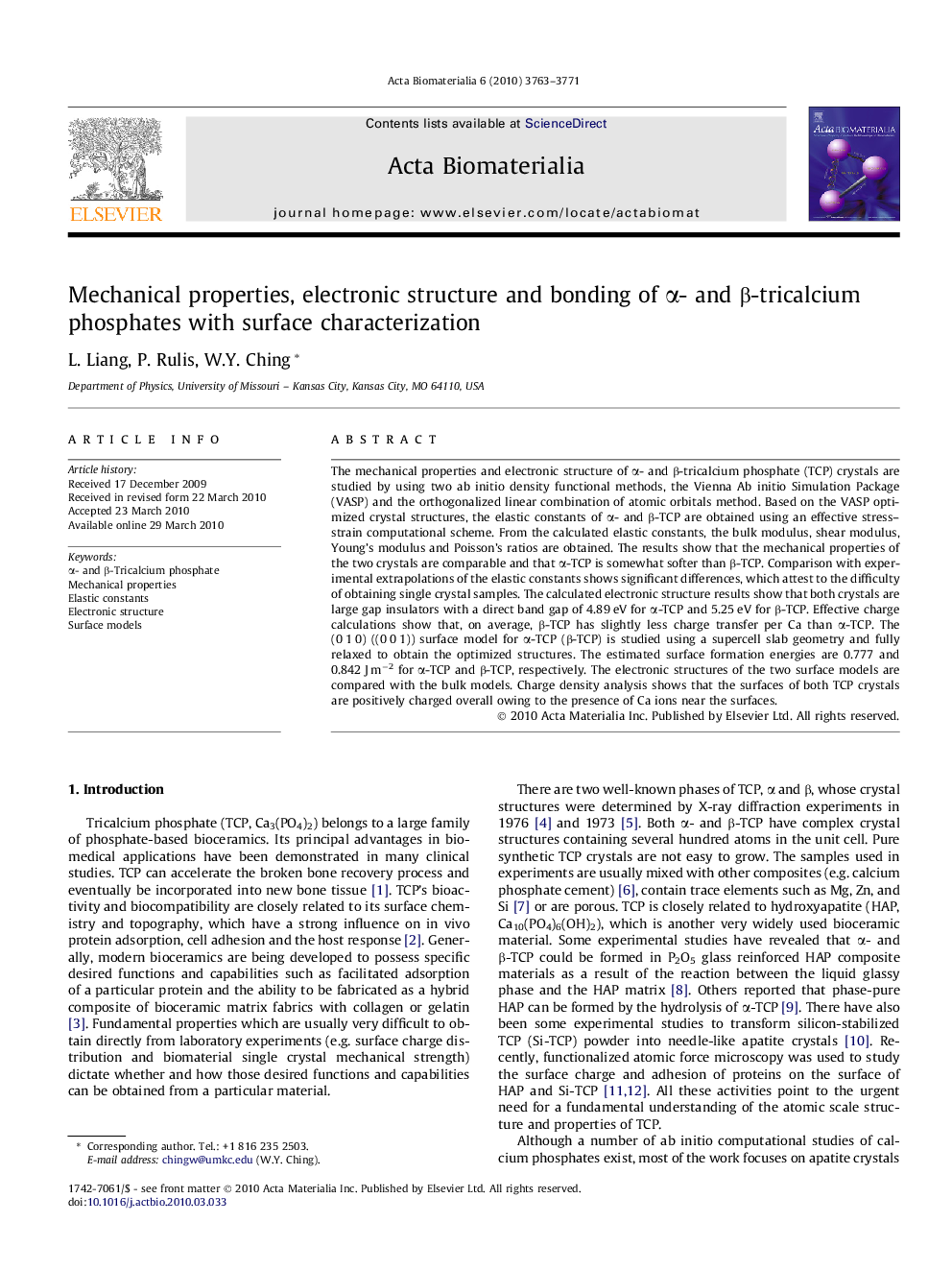| Article ID | Journal | Published Year | Pages | File Type |
|---|---|---|---|---|
| 2173 | Acta Biomaterialia | 2010 | 9 Pages |
The mechanical properties and electronic structure of α- and β-tricalcium phosphate (TCP) crystals are studied by using two ab initio density functional methods, the Vienna Ab initio Simulation Package (VASP) and the orthogonalized linear combination of atomic orbitals method. Based on the VASP optimized crystal structures, the elastic constants of α- and β-TCP are obtained using an effective stress–strain computational scheme. From the calculated elastic constants, the bulk modulus, shear modulus, Young’s modulus and Poisson’s ratios are obtained. The results show that the mechanical properties of the two crystals are comparable and that α-TCP is somewhat softer than β-TCP. Comparison with experimental extrapolations of the elastic constants shows significant differences, which attest to the difficulty of obtaining single crystal samples. The calculated electronic structure results show that both crystals are large gap insulators with a direct band gap of 4.89 eV for α-TCP and 5.25 eV for β-TCP. Effective charge calculations show that, on average, β-TCP has slightly less charge transfer per Ca than α-TCP. The (0 1 0) ((0 0 1)) surface model for α-TCP (β-TCP) is studied using a supercell slab geometry and fully relaxed to obtain the optimized structures. The estimated surface formation energies are 0.777 and 0.842 J m−2 for α-TCP and β-TCP, respectively. The electronic structures of the two surface models are compared with the bulk models. Charge density analysis shows that the surfaces of both TCP crystals are positively charged overall owing to the presence of Ca ions near the surfaces.
